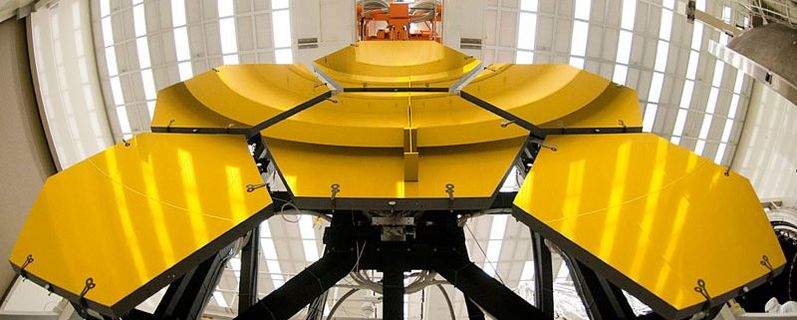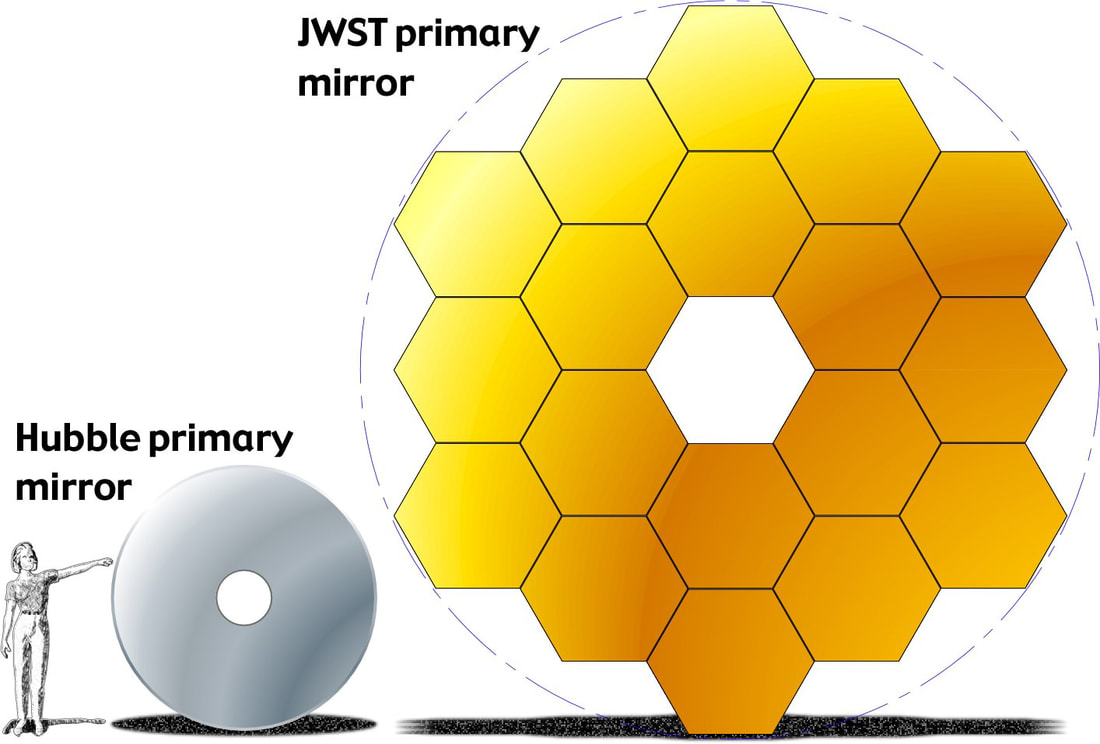The James Webb Space Telescope (JWST) is the successor to the Hubble Space Telescope (HST), and since its primary emphasis is on infrared observation, it is also a successor to the Spitzer Space Telescope.
|
JWST will have a primary mirror with a diameter of 6.5 meter, which is much larger than Hubbles 2.4-meter mirror and Spitzer's 0.85-meter mirror, and hence, JWST will have a significantly better spatial resolution. Read more about the differences between JWST and Hubble here. JWST will mainly observe in infrared (covering 0.6 to 28 microns), while Hubble's primary capabilities are in UV and optical light. Observing the universe in infrared will help us to probe stellar regions and planets that are enshrouded in dust, which absorbs UV and optical light (read more about dust here).
JWST has four different instruments: Mid-Infrared Instrument (MIRI), Near-Infrared Camera (NIRCam), Near-Infrared Spectrograph (NIRSpec), and Near-Infrared Images and Slitless Spectrograph (NIRISS). |
At Steward Observatory, I am a member of the Guaranteed Time Observation (GTO) science teams of MIRI (PI: George Rieke) and NIRCam (PI: Marcia Rieke).
I lead the study of the z~1-2 star-forming galaxies in the MIRI GTO extragalactic survey in HUDF (the MIRI HUDF Survey). Our main goals are measuring the obscured star formation rates and aromatic band strengths to constrain processes in the ISM of high-redshift galaxies. For more info, read our Astro2020 paper here.
On the NIRCam side, I am a member of the JWST Advanced Deep Extragalactic Survey (JADES), a joint program of the NIRCam and NIRSpec GTO teams using 800 hours of prime time and 800 hours of parallel time to study the formation and evolution of galaxies from z~2 to z~14, combining NIRSpec, NIRCam, and MIRI data in a coordinated observing program.
As part of the MIRI team, I will also contribute to the MIRI commissioning plan, which will happen in the first 6 months after launch.
I lead the study of the z~1-2 star-forming galaxies in the MIRI GTO extragalactic survey in HUDF (the MIRI HUDF Survey). Our main goals are measuring the obscured star formation rates and aromatic band strengths to constrain processes in the ISM of high-redshift galaxies. For more info, read our Astro2020 paper here.
On the NIRCam side, I am a member of the JWST Advanced Deep Extragalactic Survey (JADES), a joint program of the NIRCam and NIRSpec GTO teams using 800 hours of prime time and 800 hours of parallel time to study the formation and evolution of galaxies from z~2 to z~14, combining NIRSpec, NIRCam, and MIRI data in a coordinated observing program.
As part of the MIRI team, I will also contribute to the MIRI commissioning plan, which will happen in the first 6 months after launch.


